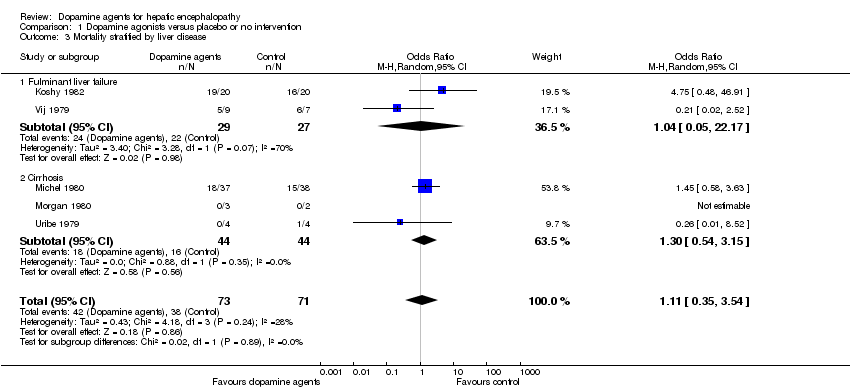Contenido relacionado
Revisiones y protocolos relacionados
Rohan Dalal, Richard G McGee, Stephen M Riordan, Angela C Webster | 23 febrero 2017
Arturo J Martí‐Carvajal, Christian Gluud, Ingrid Arevalo‐Rodriguez, Cristina Elena Martí‐Amarista | 5 enero 2019
Harry D Zacharias, Antony P Zacharias, Lise Lotte Gluud, Marsha Y Morgan | 17 junio 2019
Lise Lotte Gluud, Gitte Dam, Iñigo Les, Giulio Marchesini, Mette Borre, Niels Kristian Aagaard, Hendrik Vilstrup | 18 mayo 2017
Ee Teng Goh, Mette L Andersen, Marsha Y Morgan, Lise Lotte Gluud | 10 agosto 2017
Lise Lotte Gluud, Hendrik Vilstrup, Marsha Y Morgan | 6 mayo 2016
Ee Teng Goh, Caroline S Stokes, Sandeep S Sidhu, Hendrik Vilstrup, Lise Lotte Gluud, Marsha Y Morgan | 15 mayo 2018
Mads Israelsen, Aleksander Krag, Andrew S Allegretti, Manol Jovani, Alison H Goldin, Rachel W Winter, Lise Lotte Gluud | 27 septiembre 2017
Silvia Minozzi, Laura Amato, Pier Paolo Pani, Renata Solimini, Simona Vecchi, Franco De Crescenzo, Piergiorgio Zuccaro, Marina Davoli | 27 mayo 2015
Carl E Clarke, Julie Speller, J A Clarke | 24 abril 2000













